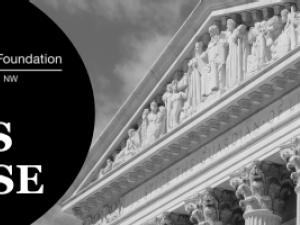The gap between America's surface transportation needs and the financial resources required to bridge them is large, immediate and long-term, according to a report released by state and local government groups. All levels of government must work together to set system-performance goals and provide the financial means to meet those goals, the report concluded. "There is a national funding crisis in transportation and we need to act now," said Mort Downey, chairman of PB Consult, Inc. He is a former US Deputy Secretary of Transportation and served as chairman of the Intergovernmental Forum on Transportation Finance, which issued the report.
"Financing Transportation in the 21st Century - An Intergovernmental Perspective" was issued today by the Intergovernmental Forum on Transportation Finance, a body convened by the National Academy of Public Administration on behalf of six national associations: National Governors Association, National Association of Counties, National League of Cities, National Conference of State Legislatures, The Council of State Governments, and International City/County Managers Association.
"To protect national, state, and local public interests, the long-term shortfalls must be addressed beginning in 2009 and the immediate problem in the Federal Highway Trust Fund needs attention even sooner," the report concluded.
"Higher levels of funding by federal, state, and local governments are essential to both maintain and improve the nation's aging transportation infrastructure," the report concluded. "New capital investments as well as adequate funds to support operations, regular maintenance, efficient multimodal system design, and innovative congestion reduction initiatives are necessary to close existing and projected financial gaps to maintain existing facilities and to meet new program needs."
The report contains six recommendations and describes the roles and responsibilities of the governments and other entities that support the nation's highway and transit systems. These systems include nearly four-million miles of roads and highways, nearly 600,000 bridges, almost 178,000 transit vehicles, approximately 11,000 miles of transit track-miles, and nearly 3,000 transit stations.
The six recommendations are:
- Congress and the Administration should take immediate action to ensure the sustainability of the federal Highway Trust Fund, and should work with the nation's state and local governments to ensure sustainable financial resources adequate to maintain existing surface transportation infrastructures and operations in the future, as well as to support the increased capacity needed to improve performance.
- National surface transportation performance goals and the intergovernmental roles and responsibilities needed to achieve these goals should be established collaboratively.
- All levels of government should maintain the revenue-raising principle that users and beneficiaries of surface transportation systems and services should pay as much as possible of the costs of providing established levels of service.
- In establishing intergovernmental and public-private roles and responsibilities for raising needed surface transportation funds, public policymakers should examine a wide range of sources and scenarios.
- When examining these revenue raising scenarios, public policymakers should consider the intergovernmental impacts of proposed actions for each level of government, relative to the other levels of government.
- When the federal and state governments make major changes in their surface transportation financial assistance programs, they should provide transition time to allow the government receiving assistance to adjust to these shifts.
Formed in January 2007, the Intergovernmental Forum on Transportation Finance reviewed the current status of surface transportatio








